On Friday mornings a team of us meets over Zoom to plan for our inclusive pod and discuss any other concerns or pressing issues. As Thanksgiving approached we’d talked about how 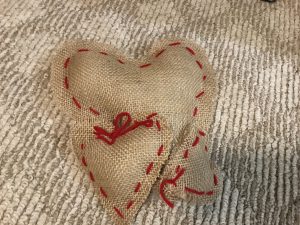 we wanted to do a project that dealt with thankfulness, but hadn’t found one yet.
we wanted to do a project that dealt with thankfulness, but hadn’t found one yet.
The day before we met I spent time pursuing Pinterest for some of those beautiful crafty projects teachers post about doing for Thanksgiving. I found one from a Montessori teacher who had her children sew small hearts to give away at Thanksgiving dinner. Well, that sounded sweet and I couldn’t think of anything better. Instead of handing them out at Thanksgiving we could mail them to people we can’t be with this year.

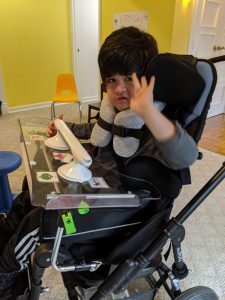 One aspect of our Inclusive Program that makes it so strong is our collaborative approach. Although so far you are only hearing about it from my perspective on this blog, I am only one piece of this program. This multi-perspective planning is by design so that both the speech pathologist and the special education teacher’s knowledge and insights are able to work together to determine the best way to increase language and academic success.
One aspect of our Inclusive Program that makes it so strong is our collaborative approach. Although so far you are only hearing about it from my perspective on this blog, I am only one piece of this program. This multi-perspective planning is by design so that both the speech pathologist and the special education teacher’s knowledge and insights are able to work together to determine the best way to increase language and academic success. 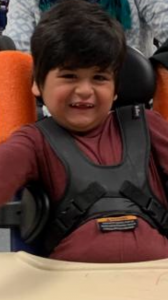 Before I was back in person with Joey his Occupational Therapist and I touched base. Although each person on a child’s team has a speciality, nothing in development happens in isolation – a child cannot learn to communicate without also developing their motor skills – and vice versa. Typical development occurs with systems relying on one another, and when development is disrupted each system must continue to be addressed. In truth, I think Joey’s OT and I wish we were able to collaborate more frequently. I can always tell when he has made sudden gains in OT because the gains coincide with progress in his communication and academics.
Before I was back in person with Joey his Occupational Therapist and I touched base. Although each person on a child’s team has a speciality, nothing in development happens in isolation – a child cannot learn to communicate without also developing their motor skills – and vice versa. Typical development occurs with systems relying on one another, and when development is disrupted each system must continue to be addressed. In truth, I think Joey’s OT and I wish we were able to collaborate more frequently. I can always tell when he has made sudden gains in OT because the gains coincide with progress in his communication and academics.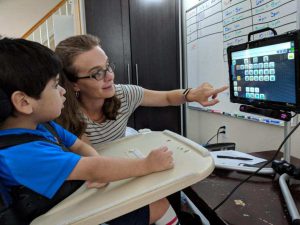 I was recently able to attend the Council for Exceptional Children’s National Conference in Indiana. I love being able to hear about current research, connect with educators, and learn new strategies and techniques. This year I was thrilled to see a session titled “Instructional Decision Making: Students Who Use AAC: What Do the Experts Say?” Perfect! I thought. I’ll learn what the research says and come away with some specific, concrete ideas to apply to my work with Joey.
I was recently able to attend the Council for Exceptional Children’s National Conference in Indiana. I love being able to hear about current research, connect with educators, and learn new strategies and techniques. This year I was thrilled to see a session titled “Instructional Decision Making: Students Who Use AAC: What Do the Experts Say?” Perfect! I thought. I’ll learn what the research says and come away with some specific, concrete ideas to apply to my work with Joey.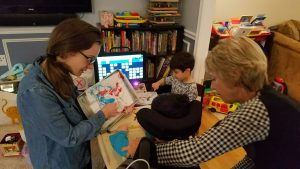 I read the book
I read the book 
